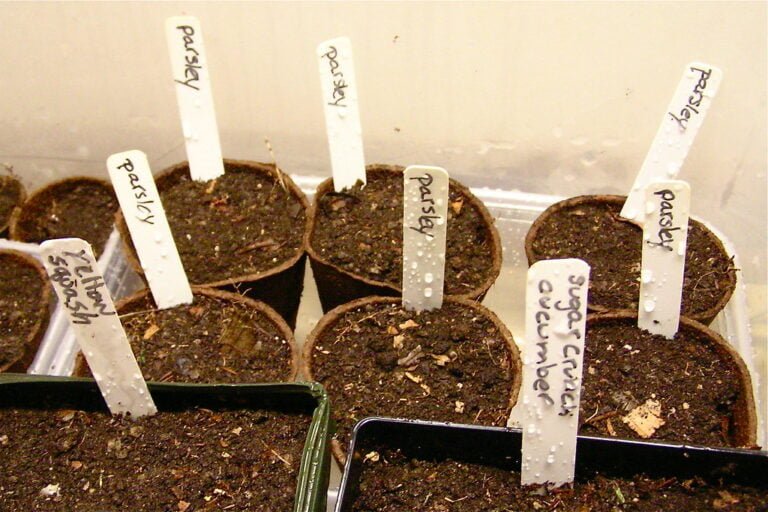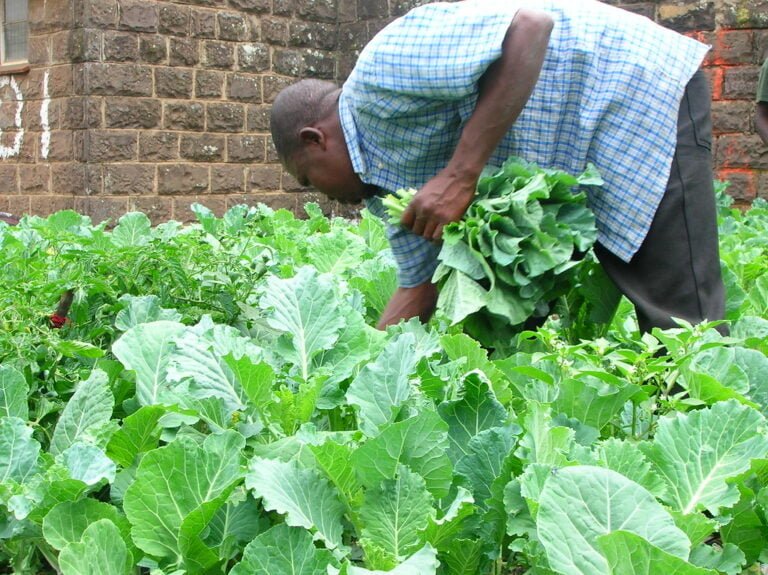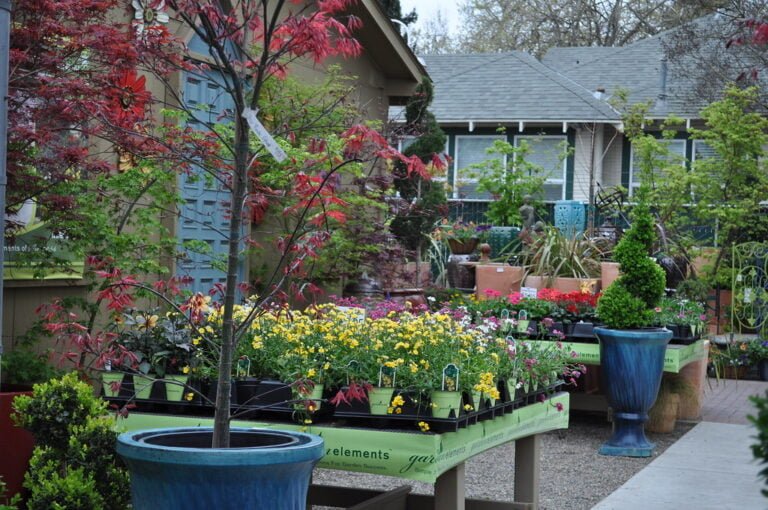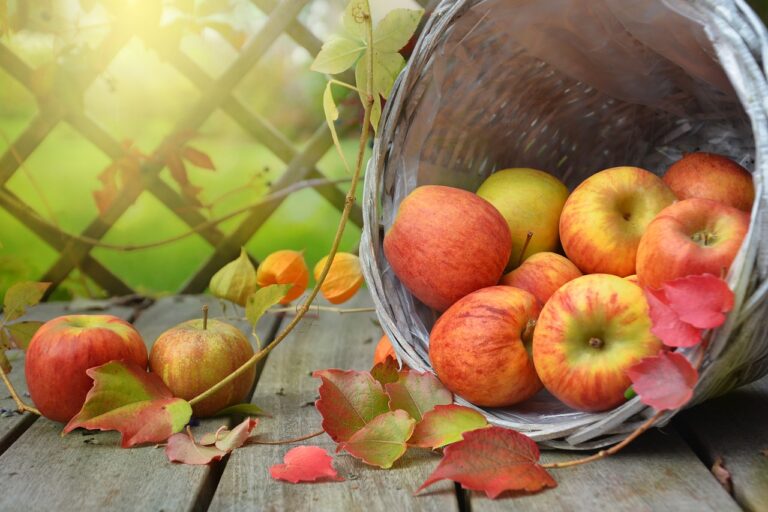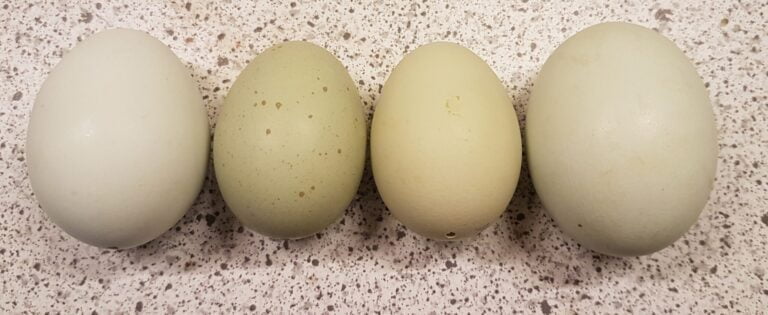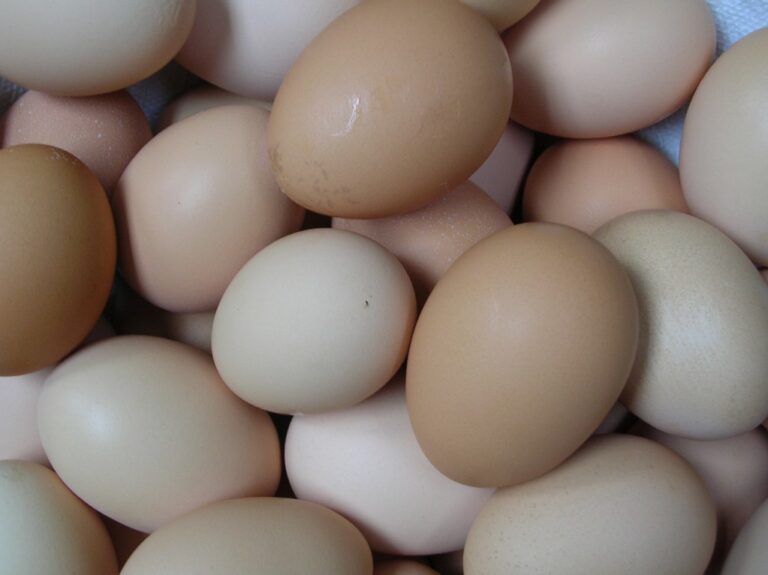Guide to Growing Broccoli in a Pot
I grow broccoli in pots successfully. Choose compact varieties like Royal Tenderette or Tenderstem. Your pot should be deep with drainage holes, filled with pH-balanced soil and slow-release fertilizer. Start seeds indoors weeks ahead, transplant deep, and water adequately. Provide sunlight, feed balanced fertilizer, and watch for pests. Water 1-1.5 inches weekly, avoiding overwatering. Maintain soil pH, enrich with compost, and prevent root rot. Manage pests naturally and guard against diseases. Harvest main heads dark green and compact, then promote side shoots. For more tips, nurture side shoot growth and optimize your harvest.
Understanding Broccoli Varieties
What makes certain broccoli varieties ideal for container gardening? In the case of growing broccoli in containers, choosing the right variety can greatly impact your success. Royal Tenderette Hybrid is a standout choice for container gardening due to its compact size, making it perfect for small spaces. This variety is not only space-efficient but also high-yielding, ensuring a bountiful harvest. With a quick maturity period of just 55 days, Royal Tenderette Hybrid is an excellent option for beginners looking to enjoy home-grown broccoli in a short amount of time.
Tenderstem Broccoli is another fantastic choice for container gardening enthusiasts. This variety is known for its tender stems, making it a delightful addition to any dish. With a maturity period of 50-60 days, Tenderstem Broccoli allows for multiple harvests, ensuring a steady supply of fresh produce throughout the growing season. Its compact nature further improves its suitability for container cultivation, making it a popular choice among gardeners looking to maximize their harvest in limited space.
Purple Sprouting Broccoli offers a unique twist to traditional broccoli varieties. Known for its vibrant purple florets and cold-tolerance, this variety matures in up to 200 days, providing a long harvest window for patient gardeners. While it may take longer to mature compared to other varieties, the striking appearance and unique flavor of Purple Sprouting Broccoli make it a rewarding choice for container gardening enthusiasts seeking a diverse range of produce.
Preparing Container and Soil
I’ll lead you through selecting the right container for growing broccoli in a pot and preparing the ideal soil. These steps are vital for setting up an environment where broccoli can thrive and produce a bountiful harvest. Let’s make sure the container is spacious enough for root growth and the soil is well-draining and nutrient-rich to support healthy broccoli development.
Container Selection Tips
For successful growth of broccoli in a pot, selecting the right container and preparing the soil are crucial steps. When selecting a container, opt for one that is at least 12-18 inches deep and wide to allow ample space for root growth. Look for containers made of plastic, clay, ceramic, wood, or fabric with proper drainage holes to prevent waterlogging. It is vital to use a well-draining, nutrient-rich potting mix with a pH of 6.0-7.0 to support healthy broccoli growth in containers. Incorporating slow-release fertilizer into the soil will provide essential nutrients for the broccoli plants in the pot, ensuring they thrive. Proper container and soil preparation are key to creating an optimal environment for growing broccoli successfully in a pot.
Soil Preparation Steps
When preparing the container and soil for growing broccoli in a pot, the first step is to make sure the selected container is adequately sized to accommodate the broccoli roots and has proper drainage holes to prevent waterlogging. Choose a container that is at least 12 inches deep and wide. Opt for a well-draining, nutrient-rich potting mix with a pH range of 6.0-7.0 for ideal broccoli growth. Incorporate slow-release fertilizer into the soil to provide essential nutrients for the broccoli plants. Prioritize soil preparation by selecting light-colored pots to prevent soil overheating and maintain ideal growing conditions. These steps will create a favorable environment for your broccoli to thrive in a container setting.
Sowing Seeds and Transplanting
To guarantee successful growth, it is vital to start broccoli seeds indoors 6-7 weeks before the final frost date. This guarantees that the seedlings have ample time to establish themselves before being transplanted into pots post-last frost. Here are some key steps to contemplate when sowing seeds and transplanting broccoli:
- Choose the Right Pot: Make sure the containers you choose are at least 12 inches deep and wide to provide enough space for the broccoli roots to grow and develop properly.
- Prepare the Potting Mix: Opt for a well-draining, nutrient-rich potting mix with a pH level of 6.0-7.0. This will create the ideal environment for the broccoli seeds to germinate and thrive.
- Transplant Carefully: When moving the seedlings into the pots, bury the stem up to the first set of true leaves. This encourages a stronger root system to develop, ultimately leading to healthier broccoli plants.
Remember to water the transplanted seedlings adequately to support their growth in the containers. Keeping the soil consistently moist but not waterlogged is key to ensuring your broccoli plants flourish. Following these steps will establish a solid foundation for your broccoli plants as they continue to grow and mature.
Caring for Broccoli Plants
I’ve found that watering broccoli plants consistently is vital for their growth, making sure the soil remains moist but not waterlogged. Providing adequate sunlight exposure, around 6-8 hours daily, is essential to guarantee healthy development and a good yield. Regularly fertilizing with a balanced 5-10-10 fertilizer supports the plants’ nutrient requirements, while monitoring for diseases and pests helps address any issues promptly.
Watering Frequency
Consistently monitoring and adjusting the watering frequency of your container-grown broccoli is pivotal for maintaining ideal soil moisture levels.
- Monitor Moisture: Insert a finger into the soil regularly to check hydration levels.
- Optimal Watering: Aim for 1-1.5 inches of water per week to promote healthy growth.
- Adjust Based on Conditions: Modify watering frequency based on factors like temperature and humidity to prevent drought stress.
Proper watering is vital in container gardening to avoid overwatering, which can lead to issues like root rot. By staying attentive to your plant’s water needs and adjusting accordingly, you can help your broccoli thrive and avoid water-related problems.
Soil Nutrient Requirements
Ensuring that your container-grown broccoli plants receive a balanced mix of essential nutrients like nitrogen, phosphorus, and potassium is crucial for fostering their healthy growth and development. Maintaining the soil pH between 6.0-7.0 is important for ideal nutrient uptake. To improve soil fertility, incorporate compost or organic fertilizers rich in nitrogen, phosphorus, and potassium. Broccoli thrives in well-draining soil with ample organic matter, promoting robust root health and efficient nutrient absorption. Regular soil testing helps identify any deficiencies, allowing you to adjust nutrient levels accordingly. By providing a nutrient-rich environment through proper soil management practices, you can support the growth and productivity of your container-grown broccoli plants effectively.
Pest Management Techniques
Regularly inspecting broccoli plants for common pests like cabbage worms, aphids, and cutworms is essential for effective pest management and maintaining plant health. In terms of pest control, I rely on a few key techniques:
- Handpicking: Remove visible insects by hand to keep your broccoli plants pest-free.
- Insecticidal Soaps or Neem Oil Spray: These natural remedies are effective in managing and deterring pests from infesting your broccoli.
- Companion Planting: Consider planting basil or dill near your broccoli as these herbs can help repel pests and boost the overall health of your plants.
Pest and Disease Management
When managing pests and diseases while growing broccoli in a pot, it is vital to monitor the plants regularly for common culprits such as cabbage worms, cutworms, aphids, and armyworms. These pests can quickly damage broccoli plants if left unchecked. Utilizing organic methods like handpicking pests off the plants, using insecticidal soaps, or applying neem oil can effectively manage infestations without the use of harsh chemicals.
In addition to pests, it’s essential to inspect the leaves for signs of yellowing, which could indicate a nutrient deficiency in the soil. Addressing any deficiencies promptly can help maintain the health and vigor of the broccoli plants. Moreover, keep an eye out for white, purple, or gray cottony growth on the undersides of leaves, as this could be a sign of fungal diseases. Implementing cultural practices such as solarizing the soil before planting, maintaining proper pH levels, and practicing crop rotation can aid in disease prevention.
Regularly monitoring pests and diseases, along with promptly addressing any issues that arise, is key to successful pest and disease management when growing broccoli in a pot. By being proactive and using organic methods, you can help guarantee that your broccoli plants thrive and produce a bountiful harvest.
Harvesting Broccoli
To guarantee a successful harvest of broccoli grown in a pot, closely observe the central head’s color and compactness around 50-70 days post-planting. When it’s time to harvest, remember these key points:
- Harvest when Ready: Harvest broccoli when the central head is compact and dark green, typically within the 50-70 day timeframe. This ensures optimal flavor and texture.
- Proper Harvesting Technique: Cut the main head 5-6 inches below the head using a sharp knife to ensure a clean harvest. This method also encourages side shoot development.
- Encourage Continuous Growth: After harvesting the main head, keep an eye out for side shoots on the plant. Harvest these side shoots when they reach a desirable size. This practice not only provides additional yields but also encourages continuous growth of the plant.
Utilizing proper harvesting techniques not only promotes plant health but also encourages further production in container-grown broccoli. By being attentive to the central head’s readiness, employing correct harvesting methods, and nurturing side shoot growth, you can enjoy a bountiful harvest of fresh and delicious broccoli from your container garden.

